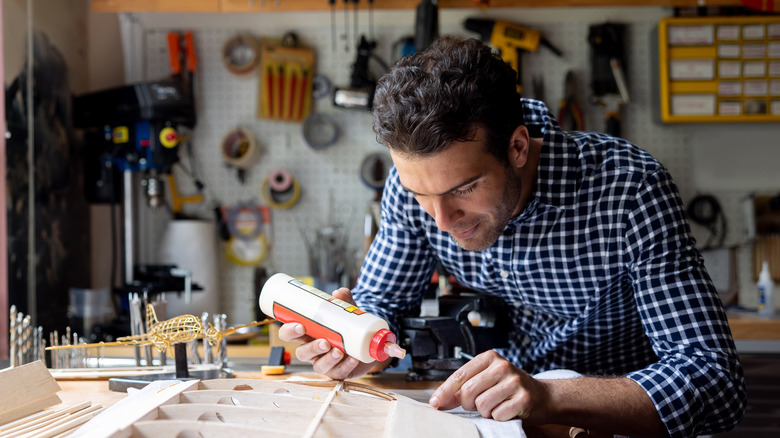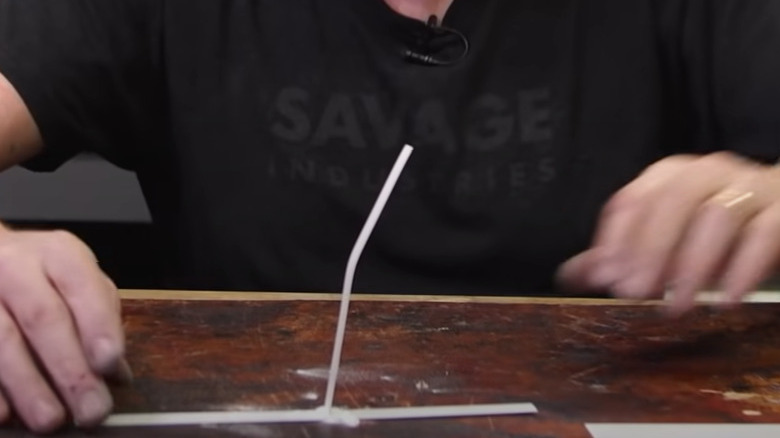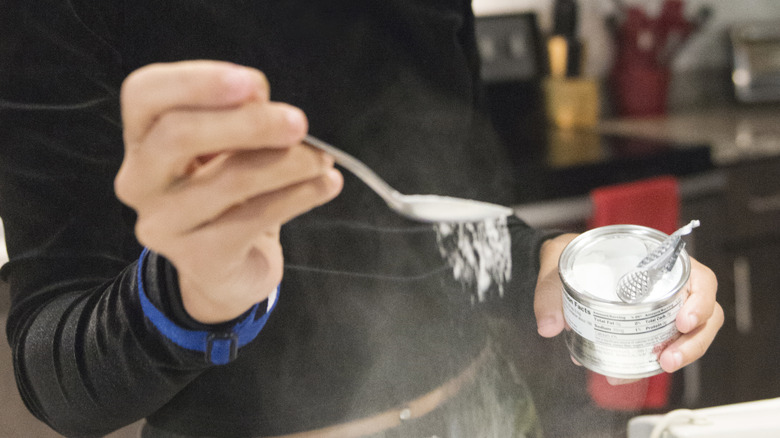Speed Up Super Glue's Drying Time With A Handy Kitchen Ingredient
Despite being better at gumming our fingers than modeling pieces together, super glues are a staple in every homeowner's arsenal. They do a neat job repairing broken household items and assisting in stunning DIY projects. Still, sometimes, they take a while to dry, delaying your sense of accomplishment. However, you can put an end to the waiting game by bringing out a handy kitchen ingredient: baking soda (sodium bicarbonate). Besides serving as a mainstay on cleaning lists and laundry hacks, baking soda has found its use as an "accelerator."
In other words, baking soda hastens the super glue curing process. So, by the time you're done clamping the broken parts, the glue will be dry, too. However, the chemical reaction warms the glue and releases heat, which can scorch your hands. So, put gloves on before undertaking the hack. Also, if you're dealing with a large surface area and are sensitive to fumes wafting from the glue, wear a respirator to avoid irritation.
The super glue-baking soda hack
Before you begin, ensure you're working outdoors or in a well-ventilated area, with hopefully a fan or a fume extractor on. This should take care of the glue's unpleasant vapors. Also, keep around a tub of Vaseline to remove super glue if it gets on your hands. Wipe down the broken pieces with a damp cloth if they're unclean. The moisture will also kickstart the chemical reaction, spurring the setting of the adhesive. Spread a thin layer of glue on the concerned piece as usual and join it to its counterpart.
Holding the pieces in place, sprinkle baking soda all over the joint. They'll hold almost instantaneously. After you're done, blow off the residual powder, but don't go overboard with baking soda, unless you want it to harden and act like a gusset. You can even layer up baking soda to increase the glue's mass and improve the joint's structural integrity. The logic is that the polymerized solid has a greater surface area, strengthening the bond.
Baking soda is an accelerator
The hack works because after coming in contact with the super glue, sodium bicarbonate molecules react with it in an exothermic (heat-releasing) reaction. This quickens the curing process, resulting in an instantaneous hardening of the adhesive. Indeed, when applied in greater quantities, the baking soda mix solidifies into a cement-like solid mass, raising the bond's durability. This explains why it's sometimes used to fill gaps and openings in damaged items, including plastic molds and furniture.
YouTuber Goobertown Hobbies, a chemistry Ph.D., goes deeper into the nitty-gritty. He explains that ethyl cyanoacrylate—the primary ingredient super glues are made of—seeps into the porous surface of the fused item. As it reacts with the atmospheric water and polymerizes, the glue hardens, uniting the broken pieces. But when baking soda is introduced into the picture, it starts a similar polymerization chain reaction, sharing its extra electrons with ethyl cyanoacrylate. However, the bicarbonate bonding is far stronger vis-a-vis the water reaction. After the cyanoacrylate has had its fill of electrons, the glue sets. Most commercial chemical accelerators follow the same underlying principle.


